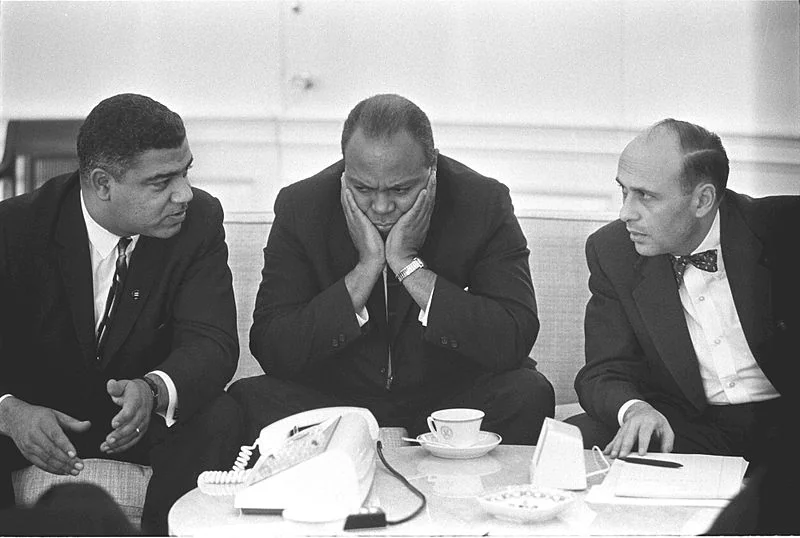Welcome to an insightful journey through one of the most transformative periods in American history—the American Civil Rights Movement. This guide takes you through the heart of the struggle for equality, exploring the major events, influential leaders, and significant milestones that shaped the movement and continue to impact us today.
Why This Matters
Understanding the Civil Rights Movement is essential for anyone looking to grasp the roots of modern social justice issues and the ongoing fight for equal rights in America. For entry-level job seekers, this knowledge can be particularly empowering, illuminating the importance of diversity and inclusion in the workplace and beyond.
So, whether you’re eager to learn about the past heroes of civil rights or find inspiration for your own role in today’s ongoing justice movements, you’ve come to the right place. Let’s dive into the rich history of the American Civil Rights Movement and uncover the lessons it holds for us all in fostering a fairer, more inclusive world.
The Roots of the American Civil Rights Movement
The American Civil Rights Movement, a pivotal era of transformation and struggle for equality, was deeply rooted in the early 20th century. Initially, the movement concentrated on ending racial segregation and discrimination against African Americans, primarily in the Southern United States.
Early Influences and Incidents
Several key events served as catalysts for the burgeoning movement:
- The Great Migration (1916-1970), when millions of African Americans moved northward, seeking better job opportunities and escaping the oppressive segregation laws of the Jim Crow South.
- The Harlem Renaissance fostered a new sense of racial identity and cultural pride among the African American community.
This period also saw the rise of influential organizations that played significant roles in advocating for civil rights. This organization worked tirelessly to combat racial discrimination through litigation, education, and advocacy. Learn more about the NAACP’s pivotal role in the movement here.
Prelude to the Modern Movement
These early developments laid the groundwork for the more structured and widespread activism of the 1950s and 1960s. Early activists’ dedication and bravery provided the foundation for what would become the most significant push toward civil rights.
Understanding the roots of the American Civil Rights Movement is essential to fully appreciating this historic period’s achievements and ongoing challenges. The National Archives offers extensive records and insights for those looking to explore more about early civil rights activism.
Key Figures in the Movement
The courageous leadership and relentless determination of several key individuals bolstered the American Civil Rights Movement. Each brought unique strategies and ideologies that profoundly shaped the course of the struggle.
Influential Leaders
Among the many influential figures, a few stand out for their extraordinary contributions:
- Martin Luther King Jr.: His advocacy for nonviolent protest became the defining feature of the movement. King’s eloquent speeches, including the iconic “I Have a Dream,” inspired millions and continue to resonate today.
- Rosa Parks: Often called “the mother of the civil rights movement,” Parks sparked the Montgomery Bus Boycott by refusing to give up her seat to a white man, a pivotal moment in the fight against segregation.
These leaders were supported by countless others whose contributions were equally vital, yet sometimes remain less recognized. Figures like Fannie Lou Hamer, who fought for voting rights, and Bayard Rustin, a key organizer behind the scenes, were instrumental in moving the movement forward.
The Role of Women and Youth
Women and young people played critical roles that were often overshadowed by their male counterparts. Organizations like the Student Nonviolent Coordinating Committee (SNCC), led by young activists like John Lewis, and the leadership of women such as Diane Nash, were central to the movement’s successes. The dynamic participation of these groups added vital energy and perspectives that fueled the movement’s momentum.
Understanding these leaders’ varied and vital contributions helps us appreciate the diverse strategies and sacrifices that characterized the American Civil Rights Movement. The Martin Luther King, Jr. Research and Education Institute provides further insights into these pivotal figures and their lasting impact on civil rights and beyond.
Major Milestones and Events
The American Civil Rights Movement encompasses numerous significant events that collectively advanced the cause of racial equality. These events highlighted the systemic issues and rallied support both nationally and internationally.
Pivotal Protests and Acts
Several key events stand out in the history of the movement:
- Brown v. Board of Education (1954): This landmark Supreme Court case declared racial segregation in public schools unconstitutional, setting a precedent for further desegregation.
- The Birmingham Campaign (1963): A series of protests in Birmingham, Alabama, which captured national attention due to the violent response from local authorities and led to significant public sympathy for the movement.
- The March on Washington (1963): Approximately 250,000 people gathered in Washington, D.C., where Martin Luther King Jr. delivered his famous “I Have a Dream” speech, significantly influencing public opinion and policy regarding civil rights.
Legislation that Changed History
As a direct consequence of these and other pressures, several important pieces of legislation were enacted:
- The Civil Rights Act of 1964: This critical law ended segregation in public places and banned employment discrimination based on race, color, religion, sex, or national origin, becoming a cornerstone of civil rights in America.
- The Voting Rights Act of 1965: It outlawed discriminatory voting practices that had been responsible for the widespread disenfranchisement of African Americans in the U.S.
The movement also included heartbreaking tragedies, such as the assassination of Martin Luther King Jr., which served as a stark reminder of the high stakes involved in the fight for equality. These milestones represent both profound struggles and significant victories in the American Civil Rights Movement. For further information on these transformative events, the History Channel offers a detailed timeline and analyses.
Legislation and Impact
The American Civil Rights Movement led to groundbreaking legislation that reshaped American society. The laws passed addressed immediate injustices and laid the foundation for ongoing civil rights advocacy.
Key Legislative Milestones
Several important legislative actions cemented the successes of the movement:
- The Civil Rights Act of 1964: As already mentioned, this act was revolutionary in ending segregation in public spaces and preventing employment discrimination.
- The Voting Rights Act of 1965: This act significantly reduced barriers to voting for African Americans, marking a crucial step towards true democratic inclusion.
- The Fair Housing Act of 1968: Aimed at eliminating discrimination in housing based on race, religion, or national origin and promoting residential integration.
Long-Term Impact on Society
These laws had profound and lasting impacts, fostering greater integration and equality in various spheres of American life:
- Increased voter registration and participation among African Americans.
- Improved access to educational and employment opportunities across racial lines.
- Promotion of civil rights in other aspects, such as gender and disability rights.
The passage of these laws also inspired further civil rights movements, shaping a more inclusive society. Their legacy is felt today in every area of American life and continues to influence global human rights discussions. The legal framework established during the American Civil Rights Movement remains a touchstone for activists worldwide. For a deeper dive into the impact of these legislative achievements, The Leadership Conference on Civil and Human Rights provides extensive resources and analysis.
Continuing the Legacy Today
The American Civil Rights Movement has left an indelible mark on contemporary society, influencing ongoing struggles for justice and equality. This pivotal era’s legacy continues to inspire new generations of activists dedicated to combating racial disparities and advocating for comprehensive social reform.
Modern Movements and Advocacy
Today’s civil rights landscape has been shaped significantly by the successes and challenges of the 1960s movements:
- Organizations like Black Lives Matter build on the foundational work of earlier activists, addressing systemic racism in law enforcement and the criminal justice system.
- Efforts to ensure voting rights continue, especially in communities historically subjected to voter suppression techniques.
Education and Awareness
Institutions and educational programs have also advanced the work started during the movement by promoting a better understanding and awareness of civil rights history:
- Educational resources, like those found on The National Park Service’s Civil Rights page, help educate the public about the movement’s history and its ongoing relevance.
- Schools and universities across the country integrate civil rights education into their curricula, fostering a more informed citizenry.
This ongoing work ensures that the struggles and triumphs of the American Civil Rights Movement remain alive, guiding current and future efforts toward a more just society. The National Civil Rights Museum offers detailed exhibits and resources for further insights into how this legacy continues to impact modern activism.
Intersectionality and Diversity within the Movement
The American Civil Rights Movement was enriched and complicated by its diversity. Participants spanned across different races, genders, ages, and socio-economic backgrounds, contributing to the movement’s depth and breadth.
Women’s Crucial Roles
Women were not just participants but essential leaders within the movement. Their involvement goes beyond iconic figures like Rosa Parks to include thousands of indispensable yet less-recognized activists:
- Women organized local community programs, planned strategies, and were at the forefront of many protests and boycotts.
- Their dual fight against racial and gender inequality added an important dimension to the concept of civil rights.
This intersectionality broadened the movement’s appeal and effectiveness, making it a powerful agent for change across different fronts. The movement’s complexity and diversity underscore the multi-layered nature of the struggle for rights and recognition. Explore more about this deep integration at the National Women’s History Museum.
Challenges and Controversies
The path of the American Civil Rights Movement was not without its challenges and controversies. These difficulties have sparked debates that continue to influence the discourse around civil rights today.
Internal Disagreements
Within the movement, differing ideologies and methods often led to internal conflicts:
- Debates between leaders who advocated nonviolent methods and those who supported more militant responses created distinct factions within the movement.
- The role of economic justice in civil rights was a contentious issue, with some activists emphasizing integration and civil liberties while others pushed for broader economic changes.
External Opposition
Resistance from institutions and widespread social norms also posed significant barriers:
- Segregationists and conservative politicians orchestrated robust opposition, sometimes using violent methods to suppress activists.
- Media portrayal of the movement was often biased, which influenced public perception and occasionally hindered progress.
Despite these hurdles, the movement’s resilience led to substantial legal and social reforms. The controversies and challenges were critical lessons, teaching future generations the complexity of fighting for civil rights. For a closer look at these dynamics, the Smithsonian Magazine offers extensive coverage of some of the most intense debates of the time.
Understanding the Significance
The American Civil Rights Movement was not just a historical episode; it’s a crucial part of ongoing dialogues about justice, equality, and human rights. Understanding its significance helps foster a society committed to upholding these ideals.
Lessons Learned
The struggle for civil rights taught several key lessons:
- Fighting for justice requires persistence and courage, often in the face of significant opposition.
- Unity in diversity significantly strengthens social movements, despite internal and external challenges.
Influence on Current Issues
The principles and strategies of the American Civil Rights Movement continue to influence contemporary social movements. Such impacts include:
- Approaches to nonviolent protest have been modeled in movements worldwide, advocating for gender equality, LGBTQ rights, and more.
- The movement has inspired ongoing discussions about racial and economic disparities in the U.S. and globally.
Reflecting on this critical period, we better understand the deep-rooted issues that still permeate society. For further exploration of its current relevance, educational resources such as the Southern Poverty Law Center provide excellent insights into how the movement’s legacy is applied today.
FAQs
What was the American Civil Rights Movement?
The American Civil Rights Movement was a decades-long struggle by African Americans and allies to end institutionalized racial discrimination, disenfranchisement, and racial segregation in the United States.
Who were the key figures in the movement?
Key figures included Martin Luther King Jr., Rosa Parks, Malcolm X, and many others who dedicated their lives to fighting for equality and justice.
What were some major milestones of the movement?
Significant milestones included the Brown v. Board of Education decision, the Montgomery Bus Boycott, the March on Washington, and the passing of the Civil Rights Act of 1964 and the Voting Rights Act of 1965.
How does the movement affect us today?
The movement laid the groundwork for ongoing discussions and policies regarding civil rights in America, influencing contemporary social justice movements and ensuring continued efforts toward equality.
Are civil rights still an issue in contemporary America?
Yes, issues such as racial profiling, income inequality, and unequal access to healthcare continue to affect minority communities, demonstrating the ongoing relevance of civil rights advocacy.
How can I learn more about the movement?
Libraries, museums, scholarly articles, documentaries, and educational websites offer extensive information on the history and impact of the American Civil Rights Movement.
Conclusion
The American Civil Rights Movement not only transformed the United States during the 20th century but continues to influence the fight for justice and equality worldwide. Through the courage and resilience of its participants, the movement achieved significant legal and social reforms that have laid the foundation for ongoing advocacy work.
Carry Forward the Legacy
As we reflect on the monumental achievements and continuing challenges, each of us must contribute to promoting civil rights in our communities. By understanding the movement’s history and impact, we can better address contemporary issues and work towards a more equitable society.
Join Diversity Employment today to be part of a community that values inclusion and diversity. Together, we can continue the vital work begun by the heroes of the civil rights era, making meaningful strides toward equality in the workplace and beyond. Get involved, and help us create a world where everyone has the opportunity to thrive.




